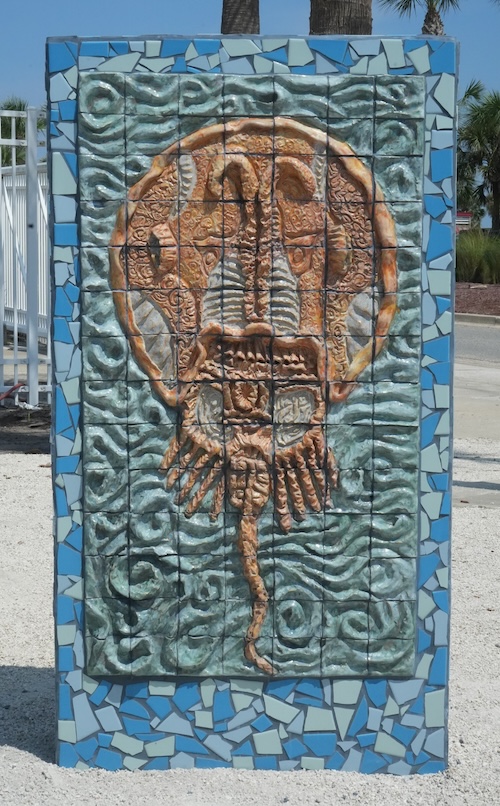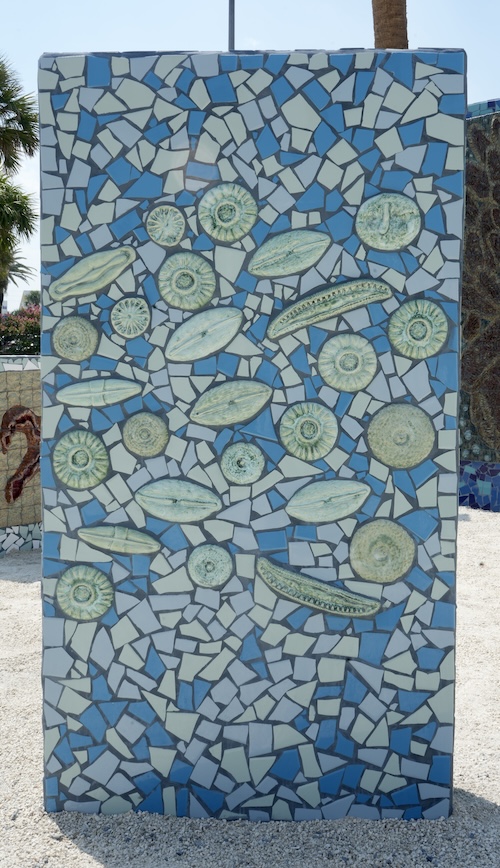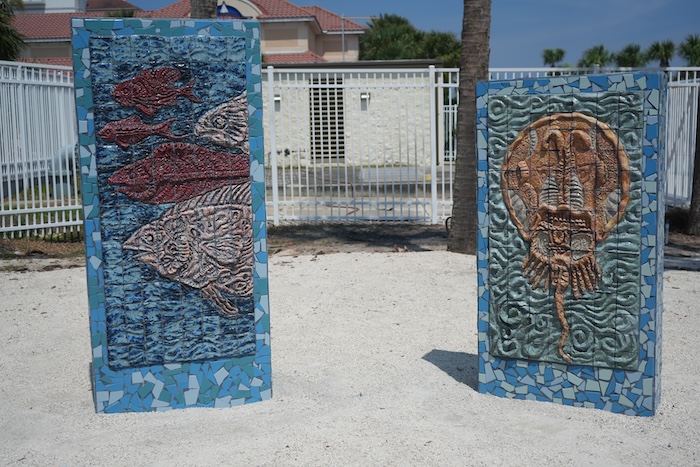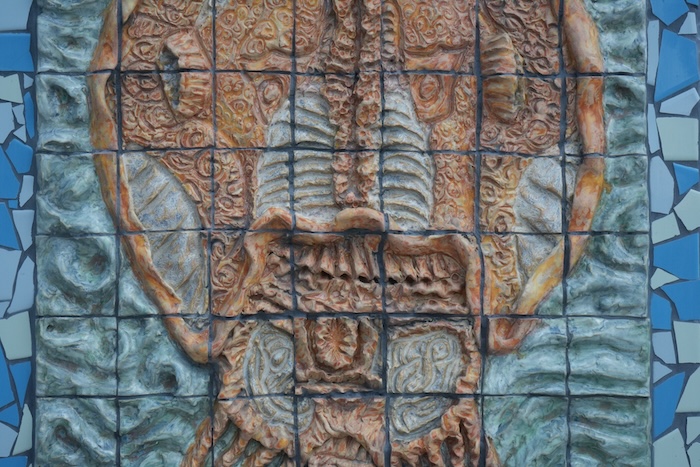Home » 2024 » Water Columns » Nearshore | Horseshoe Crab


Xavier Cortada, “Nearshore | Horseshoe Crab,” 60″ x 32″ x 8″, hand-carved, hand-glazed ceramic tile on concrete, 2024
(Water Columns series in Jacksonville Beach, FL)
Horseshoe Crab
One of seven ceramic tile works in the “Water Columns” installation, this piece represents the nearshore zone off Jacksonville Beach. It features the horseshoe crab, an ancient species vital to medical research and coastal ecosystems, now facing threats from habitat loss and overharvesting.
Story
You may have seen a horseshoe crab along the beach here in Jacksonville, where they make their way to the shore to mate. Although they mate all year-round, it’s most common to see them during March and April or September and October in the fall. But did you know that horseshoe crabs are older than dinosaurs? Some fossils date back to 445 million years ago! Considering they haven’t changed much in the last 200 million years, they have the special designation of “living fossils.” These interesting creatures are also essential in the medical field, where their copper-based, blue blood is used to ensure that injectable drugs and medical equipment are free of bacteria.
On shore, female horseshoe crabs lay up to 4,000 eggs at once! These eggs are an important food source for migrating shorebirds moving north, while horseshoe crabs themselves are prey for sea turtles. When not laying eggs on the beach, adult horseshoe crabs can live along the coast offshore. Unfortunately, horseshoe crabs are struggling with habitat loss and their eggs are being overharvested for use as bait. If you see one flipped over on the beach, you can flip them back over to help them get back into the water.
References
- 10 incredible horseshoe crab facts. Smithsonian’s National Zoo and Conservation Biology Institute. (2022, June 3). https://nationalzoo.si.edu/animals/news/10-incredible-horseshoe-crab-facts
- Are Horseshoe Crabs really crabs?. NOAA’s National Ocean Service. (2019, March 14). https://oceanservice.noaa.gov/facts/horseshoe-crab.html
- Report horseshoe crab sightings to FWC for science. Florida Fish And Wildlife Conservation Commission. (n.d.). https://myfwc.com/news/all-news/horseshoe-222/#:~:text=They%20mate%20year%2Dround%2C%20but,a%20new%20or%20full%20moon.
- Why Document Nesting Beaches. Florida Fish And Wildlife Conservation Commission. (n.d.-b). https://myfwc.com/research/saltwater/crustaceans/horseshoe-crabs/report-sightings/

